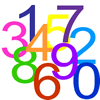Skip over navigation





Or search by topic
Number and algebra
Geometry and measure
Probability and statistics
Working mathematically
Advanced mathematics
For younger learners
Amazing Algebra

In this feature you can explore the properties of consecutive numbers, use algebra to justify your findings, and exploit the symmetries of equations in order to find efficient and elegant strategies for solving them. We hope you will enjoy discovering that algebra can be a versatile tool for solving a range of problems.
The last date for submitting solutions to the live problems is Monday 11th July.
Simultaneous Equations Sudoku
Age 11 to 18
Challenge Level 





Solve the equations to identify the clue numbers in this Sudoku problem.
A Change in Code
Age 14 to 16
Challenge Level 





Can you find the percentage increase if the results appear in code?
Symmetricality
Age 14 to 18
Challenge Level 





Five equations and five unknowns. Is there an easy way to find the unknown values?
Always Two
Age 14 to 18
Challenge Level 





Find all the triples of numbers a, b, c such that each one of them plus the product of the other two is always 2.
You may also like
Patterns in Number Sequences
These resources are designed to get you thinking about number sequences and patterns.

